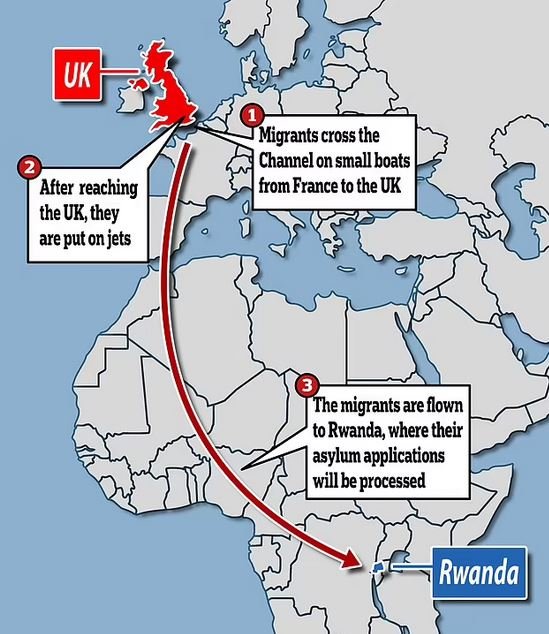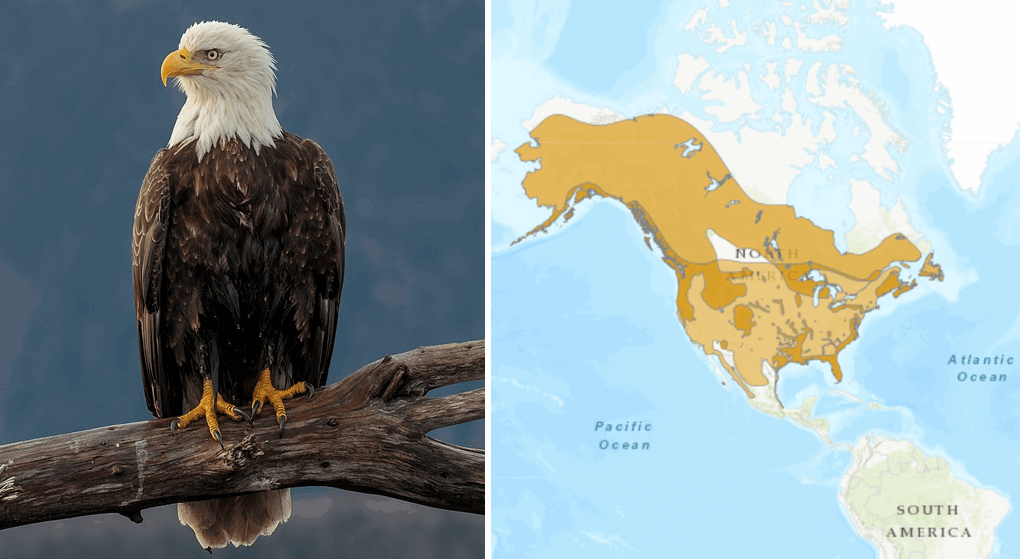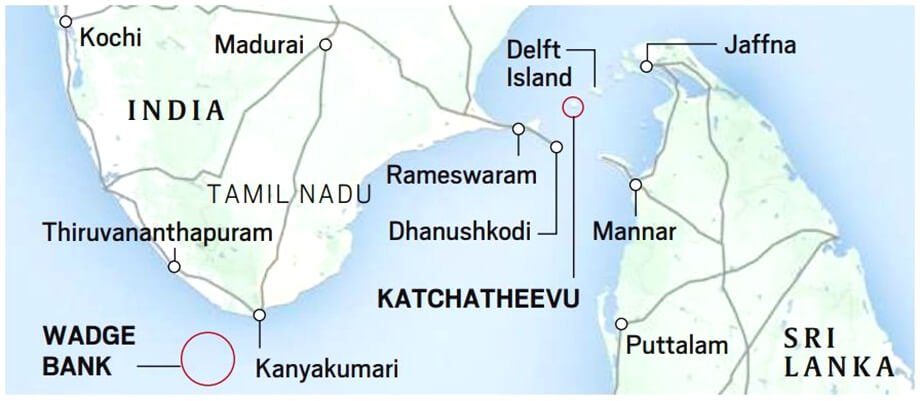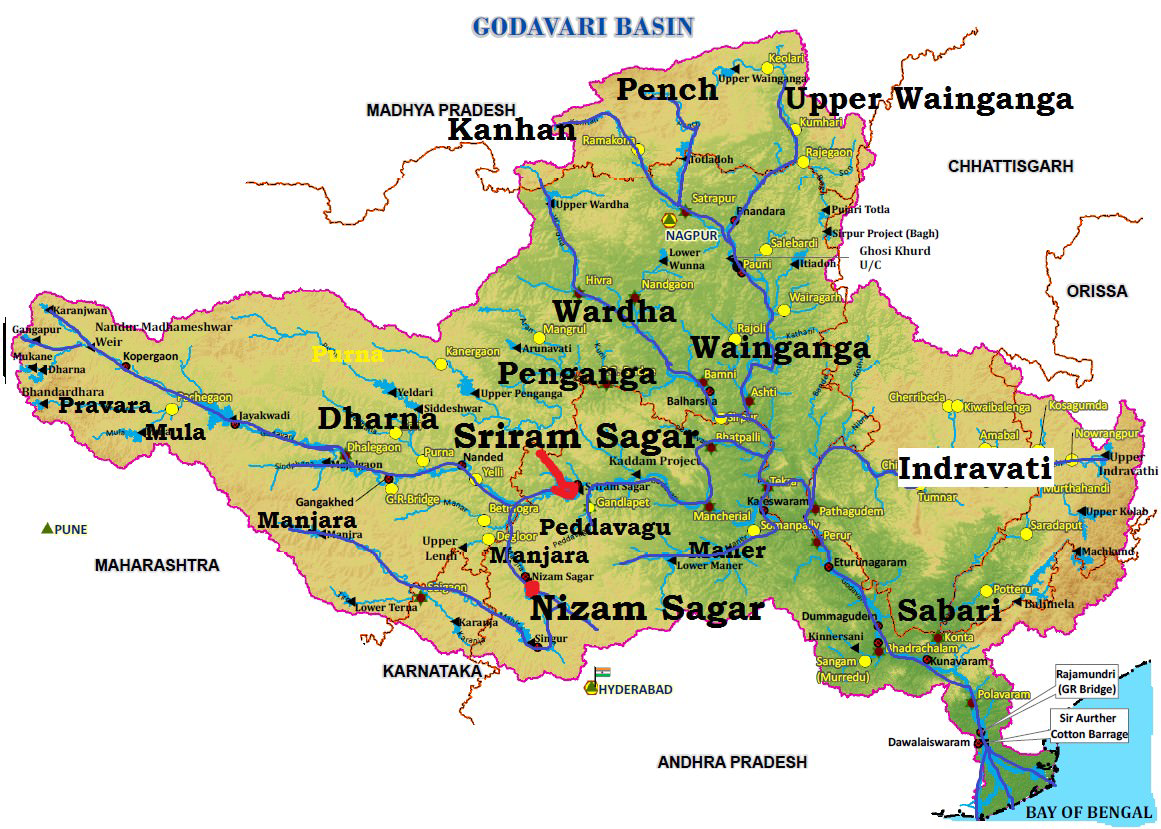
Current Affairs September 19, 2023: Chausath Yogini temple, Hoysala temples, Reforming H-1B Visa Program, SHREYAS, Parliament Secretariat, Women’s Reservation Bill, Himalayan Quail, Manipur Bush Quail, Pralay Ballistic Missiles, Shanti Swarup Bhatnagar Prize
Subscribers of "Current Affairs" course can Download Daily Current Affairs in PDF/DOC
Subscribe to Never Miss an Important Update! Assured Discounts on New Products!
Must Join PMF IAS Telegram Channel & PMF IAS History Telegram Channel
{GS1 – A&C – Architecture – 2023/09/19} Chausath Yogini temple
- Context (IE): Chausath Yogini temple is believed to have inspired the structure of the old Parliament.
- Chausath Yogini temple is in the Morena district of Madhya Pradesh.
- It is dedicated to the 64 (chaunsath in Hindi) yoginis.
- It was built around 1323 by King Devapala of the Kachchhapaghata dynasty.
- It is a circular temple with:
- 64 chambers dedicated to the 64 yoginis.
- A central shrine dedicated to Shiva.
- It is hypaethral, which means it has no roof (without shikhara).
|
{GS1 – A&C – Architecture – 2023/09/19} Hoysala temples
- Context (IE): The Sacred Ensembles of the Hoysala the Hoysala temples of Belur, Halebid and Somananthpura in Karnataka have been finalised as India’s nomination for consideration as UNESCO’s World Heritage for 2022-23.
Hoysala architecture
- Hoysala architecture is the building style of Hindu temples developed under the Hoysala Empire between the 11th and 14th centuries in Karnataka.
- Hoysala architecture is influenced by the Western Chalukya architecture and is part of the Karnataka Dravida tradition of temple architecture in the Deccan.
- Hoysala temples are known for their detailed carvings on soapstone, which cover almost all the surfaces of the walls, pillars, and ceilings.
- Hoysala temples have a distinctive star-shaped plan, with multiple shrines arranged around a central hall or mantapa.
- The shrines have tower-like structures or vimanas on top, which are also decorated with carvings.
- Hoysala temples feature sculptures of deities, mythological scenes, animals, birds, dancers, musicians, and floral motifs.
- The sculptures reflect the religious diversity of the Hoysala empire, as they include Hindu, Jain, and Buddhist themes.
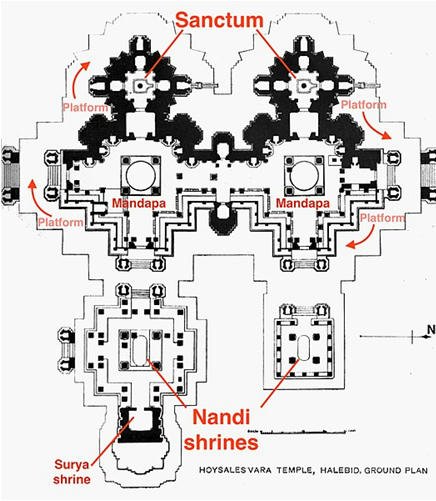
Most Notable Examples Of Hoysala Architecture
Chennakesava Temple at Belur, Karnataka
- The Chennakesava Temple was built by King Vishnuvardhana in 1117 CE to commemorate his victory over the Cholas.
- The temple is dedicated to Vishnu and has a magnificent image of him as Chennakesava.
- The temple is also famous for its bracket figures (madanikas) that adorn the pillars of the hall.
Hoysaleswara Temple at Halebidu, Karnataka
- The Hoysaleswara Temple was built by King Vishnuvardhana and his queen Shantala Devi in the 12th century CE.
- The temple is dedicated to Shiva and has two identical shrines facing each other.
- The temple is renowned for its extensive & intricate carvings that cover almost every inch of the walls.
Kesava Temple at Somanathapura, Karnataka
- The Kesava Temple was built by King Narasimha III in 1268 CE.
- The temple is dedicated to Vishnu and has three shrines arranged in a trikuta (three-peaked) plan.
- Each shrine has an image of Vishnu in a different form: Kesava, Janardana, and Venugopala.
UNESCO World Heritage Sites
- UNESCO World Heritage Sites are landmarks or areas recognised for their cultural, historical, scientific, or other significant value.
- Selection criteria for UNESCO World Heritage Sites require that they must already be classified landmarks and possess unique cultural or physical significance.
- The World Heritage Committee is responsible for selecting and monitoring World Heritage Sites, managing the World Heritage Fund, and providing financial assistance for their preservation.
- India is a member of the World Heritage Committee for the period 2021-2025, which plays a crucial role in the nomination and preservation of World Heritage Sites worldwide.
{GS2 – IR – Groupings – 2023/09/19} G-77
- Context (TH): The G-77 summit concluded in Havana (Cuba).
- The Group of 77 (G-77) was established in 1964 by 77 developing countries at the end of the United Nations Conference on Trade and Development (UNCTAD) in Geneva.
- The group signed the Algerian Charter in 1967, which gave it an institutional structure.
- Today, it has 134 member states, including India.
- It aims to:
- Promote the economic interests of the countries of the South.
- Promote South-South cooperation for development.
- Strengthen the capacity of their joint negotiation within the United Nations.
Chairmanship
- The Chairmanship of the G77 rotates regionally (between Africa, Asia-Pacific, Latin America, and the Caribbean).
- Currently, the Republic of Cuba is the Chair of the Group of 77 in New York for 2023.
{GS2 – IR – India-US – 2023/09/19} Reforming H-1B Visa Program
- Context (IE I HT): Vivek Ramaswamy, an Indian-American Republican presidential contender, has made headlines by pledging to revamp the highly sought-after H-1B visa program in the US.
- The H-1B visa is instrumental for Indian IT professionals and foreign workers seeking specialized roles in American companies, especially those requiring theoretical or technical expertise.
- Precursor to Permanent Residency: The H-1B visa is often utilized as a stepping stone for Indian professionals to secure permanent residency in the US.
- However, the process for obtaining an employment-based green card can be painfully protracted, stretching into decades for Indian applicants.
- High Demand and Visa Volume: The U.S. Embassy in India has already processed a significant number of non-immigrant visas, including H-1B visas, and is anticipated to surpass one million soon.
- Criticism: It has faced criticism due to extended waiting periods and the use of a lottery system for selecting visa recipients.
Ramaswamy’s Proposed Reforms
- Replace the lottery system with a meritocratic admission process.
- Characterizes the current system as a form of indentured servitude that primarily benefits sponsoring companies.
- Emphasizes the need to eliminate chain-based migration, advocating for merit-based contributions from family members joining immigrants.
{GS2 – MoSJE – Schemes – 2023/09/19} SHREYAS National Fellowship Scheme
- Context (PIB): SHREYAS National Fellowship Scheme is a central sector scheme that provides financial assistance to students belonging to Other Backward Classes (OBCs) and Scheduled Castes (SCs) for pursuing higher education in the fields of research and innovation.
- The scheme is implemented by the Ministry of Social Justice and Empowerment (MoSJE), Department of Social Justice and Empowerment
- The umbrella scheme of “SHREYAS” comprises 4 central sector sub-schemes:
- Top-Class Education for SCs.
- Free Coaching Scheme for SCs and OBCs.
- National Overseas Scheme for SCs.
- National Fellowship for SCs.
Free Coaching Scheme for SCs and OBCs
- The scheme is for coaching SCs and OBCs related to Jobs (public/private) and admission to higher education institutions.
- The ceiling of the total family income under the scheme is 8 lakhs per annum.
- 3500 slots are allotted per annum with a ratio of SC: OBC students is 70:30, and 30% of slots are reserved for females in each category.
- In case of the non-availability of an adequate number of candidates in the SC category, the Ministry can relax this ratio. However, in no case, less than 50% of SC students shall be permitted.
Top-Class Education for SCs
- The Scheme aims at recognizing and promoting quality education amongst students belonging to SCs, by providing full financial support.
- The Scheme will cover SC students for pursuing studies beyond the 12th class.
- The scholarship, once awarded, will continue till the completion of the course, subject to satisfactory performance of the student.
- The ceiling of the total family income under the scheme is 8 lakhs per annum.
- Presently, 266 higher education institutes which include Government and private institutes.
- The overall number of scholarships would be capped at. 21,500 for the period of 2021-26.
National Overseas Scheme for SCs
- Under this scheme financial assistance is provided to the selected students for pursuing master’s and PhD level courses abroad:
- Presently, 125 slots are allotted under the scheme
- Scheduled Castes (SCs) (115 slots)
- De-notified, Nomadic and Semi-Nomadic Tribes (6 slots);
- Landless agricultural labourers and traditional artisan categories (4 slots)
- Such students can benefit under the scheme:
- whose total family income including the candidate is less than Rs. 8 lakhs per annum,
- who have more than 60% marks in the qualifying examination,
- who are below 35 years of age and
- who secured admission to the top 500 QS-ranking foreign Institutes/ Universities.
- Under the scheme, total tuition fee, maintenance and contingency allowance, visa fee, to and fro air passage etc. are provided to the awardees.
National Fellowship for SC Students
- Under the scheme, fellowship is provided to Scheduled Castes students for pursuing higher education leading to M.Phil./PhD degrees in Sciences, Humanities and Social Sciences.
- The scheme provides for 2000 new slots per year (500 for the science stream and 1500 for Humanities and Social Sciences) who have qualified the
- National Eligibility Test- Junior Research Fellowship (NET-JRF) of UGC
- Junior Research Fellows for the Science stream qualifying UGC-Council of Scientific and Industrial Research (UGC-CSIR) Joint Test.
- There is no financial ceiling under the scheme.
{GS2 – Polity – IC – Parliament – 2023/09/19} Parliament Secretariat
- Context (IE): The author says that if Parliament is a body, the secretariat is its backbone.
- Parliament secretariat is an independent body that functions under the guidance and control of the Presiding officer of the House.
- It consists of:
- Secretary-General
- Additional Secretary
- Joint Secretary
- Other Officers and staff of the Secretariat.
- Functions:
- Advises presiding officers of the two Houses.
- Provide MPs with information to aid their legislative interventions.
- Ensures that the legislature functions smoothly.
- Article 98 of IC deals with the Secretariat of Parliament.
- It specifies that Parliament could make a law to regulate the following:
- Recruitment
- Conditions of service
of persons appointed to the secretarial staff of Parliament.
- The Parliament has not made any such law; therefore, these are done according to the rules made by the presiding officers of LS and RS.
Secretary-General
- Two Secretary-Generals, one for LS & the other for RS, are the heads of the respective secretariats.
- They are appointed by the presiding officers of the two Houses.
- Their position is equivalent to that of Cabinet Secretary in the Government of India.
- They aid and advise the presiding officers of the two Houses in discharging their constitutional and statutory responsibilities.
- They advise the House on all matters relating to the running of the House and its Committees.
{GS2 – Vulnerable Sections – Women – 2023/09/19} Women’s Reservation Bill
- Context (IE): There is speculation that the Women’s Reservation Bill could be taken up during the special session of Parliament.
Timeline
- In 1987, Rajiv Gandhi’s government constituted a 14-member committee under Margaret Alva.
- The committee presented the National Perspective Plan for Women, 1988-2000.
- The committee recommended the reservation of seats for women in elected bodies.
- These recommendations paved the way for the 73rd and 74th Constitutional Amendment Acts (P V Narasimha Rao government).
- The amendments mandated the reservation of one-third of seats for women in
- Panchayati Raj institutions
- Urban local bodies.
- Deve Gowda’s government brought the first women’s reservation Bill in 1996.
- In 2008, the UPA government introduced the Constitution (108th Amendment) Bill in RS.
- The Bill sought to reserve one-third of all seats for women in LS and the state legislative Assemblies.
- The RS passed the Bill on March 9. However, it was never brought to LS, and it lapsed with the dissolution of the LS.
- In May 2013, the Ministry of Women and Child Development constituted a committee on the status of women.
- The committee recommended at least 50 per cent reservation of seats for women in:
- Local bodies
- State Legislative Assemblies
- Parliament
- Ministerial levels
- All government decision-making bodies.
- The committee recommended at least 50 per cent reservation of seats for women in:
Women’s representation in Parliament
- Currently, Women MPs constitute less than 15% of LS members (78/545) as against the global average of 25.8%.
|
Women’s representation in Panchayat
- Article 243D of IC mandates a reservation of a minimum of one-third of seats to women.
- In 2006, Bihar became the first state to provide 50% reservation to women at the Panchayat level.
- Currently, at least 20 Indian states have given 50% reservation to women at the Panchayat.
|
Benefits of feminization of political governance
- Diverse Perspectives: Women bring more diversity to decision-making.
- Gender-Specific Issues: Women-related issues (safety of women, nutrition) will come to the forefront.
- Equality and Inclusivity: It promotes gender equality and inclusivity in governance.
- Enhanced Social Services: Female representation often leads to improved education, healthcare, and social services as these issues are given higher priority.
- Reducing Stereotypes: Women in politics help to break down gender stereotypes and biases.
- Peace and Conflict Resolution: Women’s involvement in politics contributes to peacebuilding and conflict resolution efforts.
{GS3 – Envi – Biodiversity – 2023/09/19} 75 Endemic Birds of India
- Context (TH): The publication 75 Endemic Birds of India was released on the 108th foundation day of the Zoological Survey of India (ZSI).
|
Key Findings of the Report
- Endemic Species: India is home to 1,353 bird species, representing approximately 12.40% of global bird diversity. Of these 1,353 bird species, 78 (5%) are endemic to India.
- Not Recorded Endemic Species: Of 78 endemic species, three species have not been recorded in the last few decades. They are:
- Western Ghats: The highest number of endemic species are recorded in the Western Ghats, with 28 bird species. Some of the important species are the Malabar Grey Hornbill (VU), Malabar Parakeet (LC), Ashambu Laughing Thrush (VU), and White-bellied Sholakili (VU).
- Andaman and Nicobar Islands: It has the second-highest number of endemic species with 25 bird species. Some of the important species are the Nicobar Megapode (VU), Nicobar Serpent Eagle (NT), Andaman Crake (LC), and Andaman Barn Owl.
- Endemic Species in Other Regions: Four species of birds are endemic to the Eastern Himalayas, and one each to the Southern Deccan plateau and central Indian forest.
- Conservation Status: Of the 78 endemic species, IUCN has classified 25 as ‘Threatened’, 17 as ‘Vulnerable’, 11 as ‘Near Threatened’, 5 as ‘Endangered’, and 3 as ‘Critically Endangered’.
|
Zoological Survey of India (ZSI)
- ZSI, India’s apex organization on animal taxonomy, was established in 1916 during the British Raj.
- Now, it is under the Ministry of Environment, Forest and Climate Change (MoEFCC).
- It is headquartered in Kolkata and it has 16 regional centres.
- Objectives of ZSI are:
- Exploration, survey, inventorying, and monitoring of faunal diversity in India.
- Taxonomic studies of all faunal components collected
- Periodic review of the Status of Threatened and Endemic species
- Preparation of Red Data Book, Fauna of India and Fauna of States
- Bioecological studies on selected important communities/species
- Maintenance and development of National Zoological Collections
- Training, capacity building, and human resource development
- Faunal Identification, advisory services and library Services
- Publication of results
Important Endemic Bird Species of India
Manipur Bush Quail (Perdicula manipurensis)
- It is a small, ground-dwelling bird in the pheasant family. This shy bird was last sighted in 1907.
- Distribution: It is endemic to northeastern India and Bangladesh.
- Habitat: It inhabits damp grasslands and scrub.
- Conservation Status: IUCN Red List: EN
Himalayan Quail or Mountain Quail (Ophrysia superciliosa)

- It is a a medium sized, ground-dwelling bird belonging to the pheasant family.
- It was last reported on 1876 and so, is feared to be extinct. Hunting during colonial period contributed significantly to the decline in its population.
- Distribution: It is endemic to India, found only in the Uttarakhand.
- Habitat: Long grass and scrubs on steep hillsides.
- Conservation Status: IUCN: CR | WPA: Schedule I
Jerdon’s courser (Rhinoptilus bitorquatus)
- It is a nocturnal bird considered extinct until its rediscovery in 1986. But since 2009 it is not sighted.
- Distribution: It is endemic to Eastern Ghats (only Andhra Pradesh and Telangana).
- Habitat: Scrub jungles (esp. at the fringes of the Sri Lankamaleswara Wildlife Sanctuary)
- Conservation Status: IUCN: CR | WPA: Schedule I

Malabar Grey Hornbill (Ocyceros griseus)
- It is a hornbill species that is frugivore (eats mainly fruits) and act as an important seed disperser.
- Distribution: This monogamous species is endemic to the Western Ghats.
- Habitat: It is found mainly in dense forest and around rubber, arecanut, or coffee plantations.
- Conservation Status: IUCN: VU | WPA: Schedule I

Nicobar Megapode (Megapodius nicobariensis)
- Also called Nicobar scrubfowl, it is a megapode endemic to the Nicobar Islands.
- Habitat: It inhabit coastal forests close to the shore where it built nests from sand, loam and humus.
- Conservation Status: IUCN: VU | WPA: Schedule I
|

Bugun Liocichla (Liocichla bugunorum)

- Bugun liocichla was the first bird to be discovered since India’s Independence.
- Distribution: It is endemic to Arunachal Pradesh; Eaglenest Wildlife Sanctuary is famous for it.
- Habitat: It inhabits hillsides covered with shrubs and small trees.
- It was named in honour of the Bugun community of Singchung village in West Kameng district for their efforts in conserving the wildlife and forests.
- Conservation Status: IUCN: CR
{GS3 – S&T – Awards – 2023/09/19} Shanti Swarup Bhatnagar Prize
- Shanti Swarup Bhatnagar Awards is India’s top annual science prize.
- It was instituted in 1958 by the Council of Scientific and Industrial Research (CSIR) in honour of Shanti Swarup Bhatnagar, its founder director.
- The prize is awarded annually in seven disciplines:
- Biological Sciences
- Chemical Sciences
- Earth, Atmosphere, Ocean and Planetary Sciences
- Engineering Sciences
- Mathematical Sciences
- Medical Sciences
- Physical Sciences
- Eligibility criteria:
- Any citizen of India engaged in research in any field of science and technology up to the age of 45 years (on 31st December of the year preceding the year of the Prize). Overseas citizen of India (OCI) and Persons of Indian Origin (PIO) working in India are also eligible.
- Prize is awarded on the basis of contributions made through work done primarily in India during the five years preceding the year of the Prize.
- The prizes have traditionally announced every year on September 26, the foundation day of CSIR.
Council of Scientific and Industrial Research (CSIR)
|
Reducing of Scientific Awards (GS2, Governance)
- The background behind the delay in Shanti Swarup Bhatnagar Prize is the government’s decision to prune prizes to scientists.
- According to GoI, there were too many awards by various ministries which reducing its prestige.
- Last year, GoI has decided to do away with over 250 awards given to scientists & medical researchers.
- There were plans to announce a ‘big award’ akin to ‘Nobel Prize’, but it has not been announced yet.
- Concerns: Doing away of prizes will break the morale of Indian scientists and this will slow down the India’s progress in scientific field.
Why Scientific Awards Should Not be Reduced
Product of Industrious Work
- Scientific research achievements are not a sudden flick but are the product of years of industrious work.
- They are the result of undying perseverance, hard work, and intellect of scientists.
- It took almost the lifetime of great Indian scientists like Dr Homi J. Bhabha, Dr. Vikram Sarabhai, and Dr. APJ Abdul Kalam to establish India as a nuclear power state.
- So, due recognition for such achievements is of utmost importance.
India Being a Developing Country
- India is a developing country in its fleet to become a developed country. To achieve this, contribution from scientific fields is must.
- For e.g., Japan’s economy was in shambles after the World War II. But this island country has invested in science and technology and it is a developed country with world’s third largest economy.
- India is 9 times larger than Japan with a huge workforce. So, India can reap a huge dividend by investing in science and technology.
Challenges from Climate Change
- The repercussions of climate change are already visible all over the world with increased natural calamities, zoonotic diseases, reduced food productivity etc.
- The solutions to mitigate these challenges lies in the hands of scientific fraternity.
- For e.g., Chewang Norphel, an Indian civil engineer from Ladakh, has built 15 artificial glaciers and earned the title of Ice Man.
Low Funds for Scientific Research
- The GoI spends only 0.7% of gross domestic product on research and development. This pales in comparison to China’s 2%, Japan’s 3.4% and the United States’ 2.7%.
- The Indian research community is always haunted by delay in release of grants and fellowships.
- Reducing the awards will further demotivate the scientific community.
Achievements
- Despite many obstacles Indian science community is achieving high.
- For example, ISRO has successfully conducted Chandrayaan missions, Mar Orbiter Mission, and Aditya L1 mission at very low cost. Each mission costed almost equal to high budget Bollywood movie.
- To recognise the talent of such scientists, the awards should be there.
Concerns Over Hegemony of Man in Scientific Awards (GS1, Women Empowerment)
- In Shanti Swarup Bhatnagar Awards (SSB) 2022 announced, there is not a single women awardee.
- In fact, since its inception in 1958, only 19 women scientists have been the recipients of the SSB award.
- This means that only 19 out of the almost 600 awarded SSB have gone to women scientists.
- Women make up around 14% of India’s working scientists. While this figure is concerning, it renders the argument “there aren’t enough women” moot.
- The Nobel Prizes have a similarly pathetic gender ratio. Only 24 of the 343 science prizes have gone to women. However, the Royal Swedish Academy of Sciences has become conscious of the gap.
- Encouragingly, 31 of the 61 prizes for women (across all categories) came since the year 2000.
- But there are no comparably encouraging signs from the SSB awards.
- Reason: The cause behind why so few women win awards usually lies in the selection process.
- In case of SSB, scientist stands a chance only if they are nominated by those at the very top, including vice-chancellors, directors, former winners etc. All of these are predominantly men; men who are failing to nominate their women colleagues.
Way Forward
- Ageism, casteism, sexism and the hegemony of old boys’ clubs need to be questioned if we want to achieve any form of inclusivity in the India’s science community.
- The selection process must be made neutral and transparent, so that eligible scientists get their due irrespective of the gender and identity.
{GS3 – S&T – Defence – 2023/09/19} Pralay Ballistic Missiles
- Context (TOI I HT): The Defence Ministry has approved the acquisition of ‘Pralay’ ballistic missiles for deployment along the Line of Actual Control and the Line of Control.
- This marks India’s first use of ballistic missiles for conventional operations.

Key Features
- Strike Range: 150 to 500 kilometers
- Payload Capacity: 350 kg to 700 kg conventional warhead
- Warhead Variability:
- High explosive preformed fragmentation warheads
- Penetration-cum-blast (PCB) warheads
- Runaway denial penetration submunitions (RDPS)
- Classification: Quasi-ballistic surface-to-surface missile
- Maneuverability: Mid-flight trajectory alteration capability
- Propulsion: Solid propellant rocket motor with advanced guidance systems
- Global Comparisons: Comparable to China’s Dong Feng 12 and Russia’s Iskander missile
Strategic significance
- Long Range: ‘Pralay’ is set to become the Army’s longest-range surface-to-surface missile (for conventional military operations.), bolstering India’s strategic capabilities.
- Central Role: Alongside the BrahMos supersonic cruise missile, ‘Pralay’ will be a key component of India’s Rocket Force, enhancing the nation’s strategic position.
- Critical Acquisition: India’s acquisition of ‘Pralay’ is driven by the deployment of ballistic missiles by China and Pakistan for tactical purposes, underscoring its strategic importance.
Ballistic Missiles
Suggested reading: Ballistic Missile vs. Cruise Missile, India’s Missile Systems, IGMDP |
||||||||||||||||||||||||||||||||||||||||||||||||





![PMF IAS Environment for UPSC 2022-23 [paperback] PMF IAS [Nov 30, 2021]…](https://pmfias.b-cdn.net/wp-content/uploads/2024/04/pmfiasenvironmentforupsc2022-23paperbackpmfiasnov302021.jpg)


